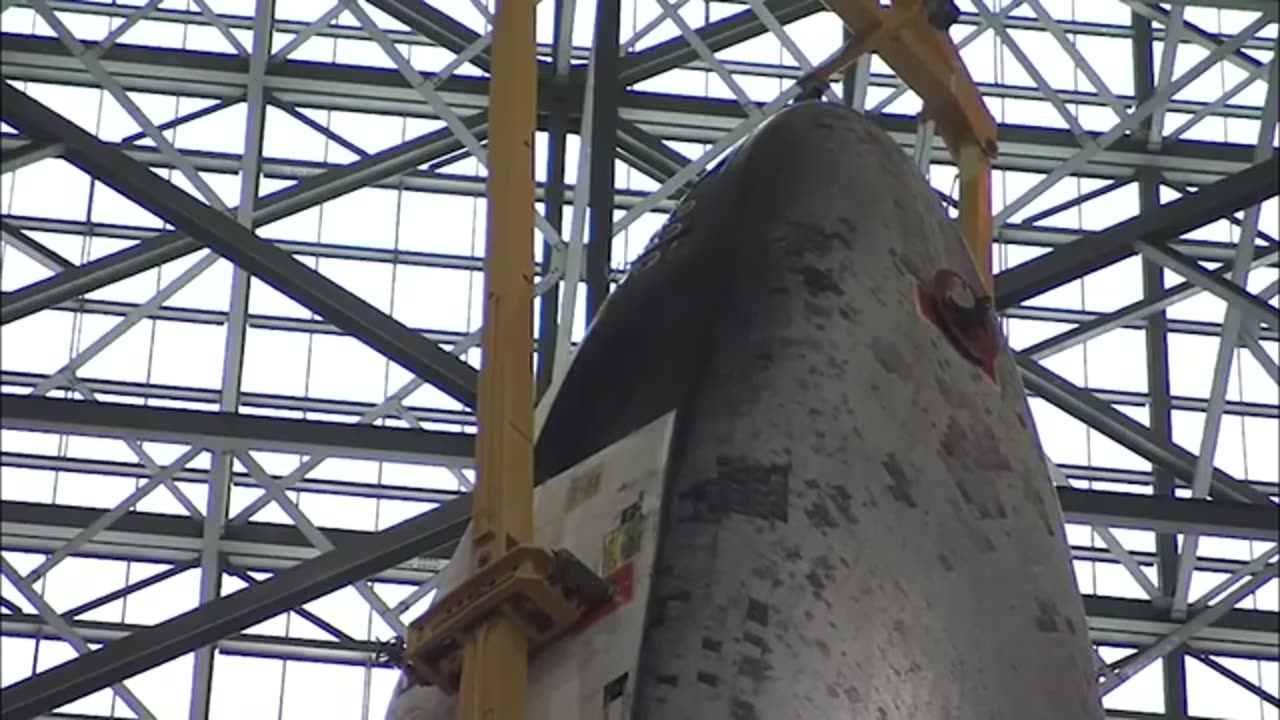Premium Only Content

The Insane Engineering of Re-Entry
The engineering behind spacecraft re-entry is one of the most challenging and critical aspects of space exploration. Re-entry involves guiding a spacecraft safely back through Earth's atmosphere, a process fraught with extreme forces, intense heat, and the need for pinpoint precision. Here's an overview of the engineering marvel that makes it possible:
---
### **1. The Challenge of Re-Entry**
- **Speed**: Spacecraft re-enter Earth's atmosphere at speeds of up to 28,000 km/h (17,500 mph). At these speeds, friction with atmospheric particles generates immense heat and drag forces.
- **Heat**: The compression of air in front of the spacecraft creates temperatures of up to 1,650°C (3,000°F). Managing this heat is one of the most critical challenges.
- **Deceleration**: The spacecraft experiences intense G-forces as it slows down rapidly, which can be dangerous for both the structure and any crew aboard.
---
### **2. Thermal Protection Systems (TPS)**
The heat shield is the star of re-entry engineering. There are two main types:
- **Ablative Heat Shields**: Used in capsules like Apollo, Orion, and Dragon. These shields burn away layer by layer, carrying heat away from the spacecraft.
- **Reusable Tiles**: Found on the Space Shuttle, these silica-based tiles withstand high temperatures and can be used for multiple missions.
**Materials Used**:
- Carbon composites
- Reinforced carbon-carbon (RCC)
- Phenolic resin for ablative layers
---
### **3. Aerodynamics and Shape**
- **Blunt-Body Design**: Most re-entry vehicles use a blunt shape to maximize drag, reducing speed and distributing heat more evenly. This design also creates a shockwave that deflects much of the heat away from the spacecraft.
- **Lifting Re-Entry**: Some spacecraft, like the Space Shuttle, utilize aerodynamic surfaces to "glide" through the atmosphere, providing more control over the landing site.
---
### **4. Controlled Re-Entry**
Precise control is essential for safety and mission success:
- **Attitude Control**: Small thrusters adjust the spacecraft's orientation to ensure the heat shield faces the right direction.
- **Guidance Systems**: Onboard computers calculate trajectories in real-time to ensure the spacecraft lands in the designated area.
---
### **5. Communication Blackout**
During the most intense heating phase, ionized gases around the spacecraft block radio signals, causing a brief communication blackout. Engineers design systems to ensure the spacecraft follows a pre-programmed path during this time.
---
### **6. Parachutes and Landing Systems**
- **Capsules**: Use drogue and main parachutes to slow descent further. Some modern systems, like SpaceX’s Dragon, incorporate retro-propulsive landing thrusters.
- **Space Planes**: Like the Shuttle, these use landing gear and glide to a runway.
---
### **7. Modern Innovations**
- **Reusable Rockets**: SpaceX’s Falcon 9 and Starship have revolutionized reusability by landing intact after re-entry.
- **Hypersonic Aerodynamics**: Engineers study advanced materials and designs to withstand even higher speeds and temperatures for future missions.
-
 18:22
18:22
World2Briggs
19 hours ago $1.59 earnedThe New York Rant: Point Blank With No Fluff or BS. A Warning
3.18K5 -
 42:52
42:52
The Finance Hub
14 hours ago $1.49 earnedBREAKING: ALINA HABBA JUST SHOCKED THE WORLD!
2.25K18 -
 LIVE
LIVE
BEK TV
23 hours agoTrent Loos in the Morning - 8/26/2025
439 watching -
 LIVE
LIVE
The Bubba Army
22 hours agoBURN The FLAG, Go to JAIL! - Bubba the Love Sponge® Show | 8/26/25
3,446 watching -
 12:15
12:15
Nikko Ortiz
18 hours agoMonday Gun Fails
61.2K12 -
 8:19
8:19
MattMorseTV
17 hours ago $10.85 earnedTrump is ACTUALLY DOING IT.
61.2K46 -
 5:40
5:40
Sugar Spun Run
1 day ago $0.78 earnedNutella Brownies
9.66K -
 8:46
8:46
Faith Frontline
16 hours agoBill Maher STUNNED as Charlie Kirk Proves God Exists
10.3K10 -
 LIVE
LIVE
FyrBorne
10 hours ago🔴Warzone M&K Sniping: On the Hunt For The Next Fun Builds
106 watching -
 7:11
7:11
MudandMunitions
13 hours agoNY Legal, Still LETHAL! Colt M4 + Griffin Armament GPS3X Prism Sight! NIGHT SHOOT
8.58K3